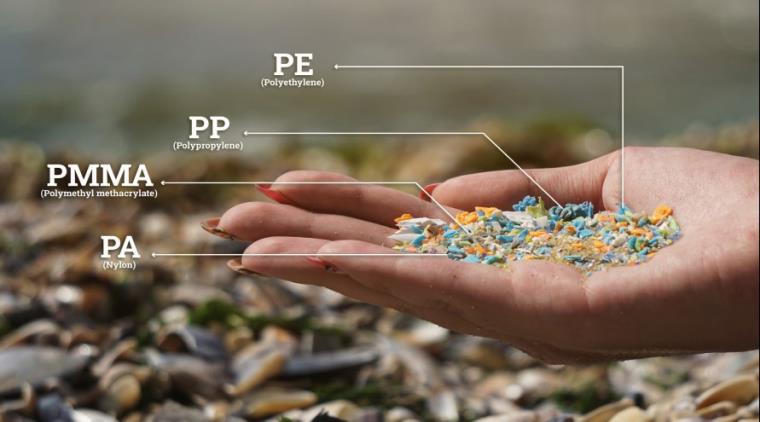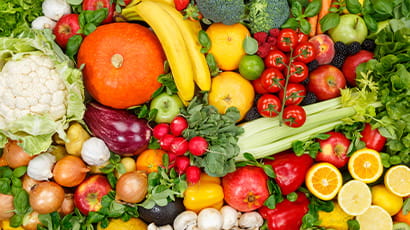Nanoplastics present worldwide in air, water and soil, with impacts on human and environmental health

Plastic is now ubiquitous across Earth’s habitats, with all life forms ingesting and inhaling nanoplastics (smaller than microplastics) – whose ability to cross biological membranes, including the blood/brain, has implications for human and environmental health – according to a “Science for Environment Policy” report written by UWE Bristol at the request of the Environment Directorate-General of the European Commission. The report, which looks at the emerging threat posed by nanoplastics to the environment and human health, was recently published by them.
Written by the Science for Environment Policy team at the University’s Science Communications Unit, the research highlights how some nanoplastics form from plastic litter, as plastic degrades to microplastics, and then to nanoplastics – with some plastics releasing toxic chemicals, such as plasticisers, into the environment and into the lifeforms that ingest them, including humans. There is evidence emerging of lethal and sub lethal effects of nanoplastics in various species, of various plastic types, at both high concentrations and levels that are found in the environment. To help advance research in this area, the European Union has some projects underway on the health impacts of micro- and nanoplastics which will investigate nanoplastics’ impacts on health over the next few years.
Nanoplastics research is a very fast-moving area of research, with new techniques for detecting and quantifying nanoplastics in development, in order to better identify nanoplastics of various plastic types, and work out their impacts on the environment and organisms. The environmental future brief highlights what is known on the methods of detection of nanoplastics, their impacts upon a variety of species, and their potential impacts on human health.
For example, after being eaten, nanoplastics have been shown to move within fish and invertebrate species such as salmon, Japanese rice fish, scallops and mussels, to the brain, liver, gonads and kidney. There is some evidence that animal mothers ingesting nanoplastic particles via eating them or inhaling them can also pass these on to their young. One of the main toxic health concerns with nanoplastics is that they bioaccumulate up the food chain, so in the oceans this means nano and micro plastics can impact greatly on marine mammals, such as whales found in the Mediterranean Sea, who consume prey that has ingested high levels of micro and nanoplastics from this polluted part of the ocean.
Nicola Shale, a science writer and editor in the Science Communications Unit, and the one of the authors of the report, said: “Nanoplastics' environmental fate is not completely understood, it is known that in the environment different nanoplastic types i.e. PVC, polyethylene, polystyrene behave differently – with a surface layer known as an ‘ecocorona’ forming – affecting whether toxic materials can bind and be carried on their surface, and how they may be absorbed if ingested. Also, different plastics contain different levels of toxic plasticisers that leach into the environment as they degrade, with PVC being one of the more toxic types of plastic in this regard.”
The regulatory response is lagging behind the pace of nanoplastic release and abundance in the environment. Recent and ongoing efforts to regulate intentionally added microplastics, and nanoplastics, within the European Union instigated much debate about the most appropriate lower size limit for classifying microplastics. This was due to it being difficult at present to detect and quantify nanoplastics in most products to enable enforcement of a regulation. The European regulatory solution has been that the category ’microplastics’ has no lower size limit – so includes nanoplastics – placing the burden of responsibility on the producer of the product, whilst avoiding leaving a gaping hole in the regulation to reduce or eliminate intentionally added micro- and nano- plastics from European products.
Shale added: “More research on the human health impacts of nanoplastic particles is needed. There is some evidence that the type of plastic, the size of the nanoplastic particle, its shape and the ‘ecocorona’ formed on its surface, can all influence the inflammation potential in the human body. But the main hazard from nanoplastics is the potential that toxic additives, such as plasticisers, and other attached pollutants are carried into organs in the human body causing inflammation. Nanoplastics could affect the microbiome in our intestines as well as the cells of the intestine, the lungs and the liver – where most small plastic particles will end up. There is some limited evidence pointing towards potential negative impacts on the cells of the immune system and increasing cell growth in cancers – but evidence is at the early stages and is still being gathered.”
The main way people are exposed to nanoplastics internally is thought to be via food, some of which has nanoplastics in it which has landed on it from the air. A study which found microplastics in human breastmilk, which must have been ingested from one of the routes of entry into the human body, breathing them in or eating them, found no correlation with the use of plastic personal care products or consumption of shellfish/fish, or food in plastic packaging, inferring the microplastic may have come from the air.
Shale said: “Steps are being taken by policy makers to ensure producers have to reduce or remove the micro- and nanoplastics from products in Europe. The new regulation will reduce addition of plastic particles, it isn’t an instant solution with the time to comply varying for products, from only two years, to 12 years for some cosmetic products. However, recycling strategies for plastics such as the banning in Europe of single use plastics will also help. As consumers, we can choose to buy less plastic products going forward. We can be careful how we dispose of our plastics – ensuring they are recycled. We can also be sensible about minimising the amount of food and drinks we consume from cheap single use plastic containers – particularly where hot food or drink is present, as this may increase the rate at which plasticisers leach out of the plastic into the food items.”
Related news

18 December 2025
UWE Bristol professor appointed National Institute for Health and Care Excellence CEO
Jonathan Benger CBE, Professor of Emergency Care at UWE Bristol, has been appointed as the new chief executive officer of the National Institute for Health and Care Excellence (NICE).

17 December 2025
Findings revealed from first UK study into experiences of mothers who are survivors of rape pregnancy
UWE Bristol academics have revealed the findings of the first UK-based study of the experiences of mothers who are survivors of rape pregnancy.

11 December 2025
Social media influencer work is far more demanding than it looks, research finds
A study exploring the mental health impacts of social media influencer work has revealed that life online is far more demanding than it appears.

25 November 2025
UWE Bristol experts join film Q&A exploring music and melodrama
Academics will take part in the Cary Comes Home Festival, with a post-screening Q&A exploring music, melodrama and emotional storytelling in classic cinema.

17 November 2025
Urgent reform needed to support ambulance-delivered end of life care, study finds
More than three quarters (78 per cent) of paramedics sometimes fear doing the wrong thing when caring for people in the last year of life, new research has found.

13 November 2025
Bristol’s screen industry experiences “boom-and-bust cycle” after post-pandemic recovery, new research from UWE Bristol finds
New research from UWE Bristol provides detailed insight into Bristol's screen sector.

13 November 2025
New AI research to revolutionise animal welfare
A UWE Bristol research project will combine behavioural science and AI to create technology that understands not only what animals do, but how they feel.

10 November 2025
Lessons from Low Traffic Neighbourhoods will drive better public engagement, study finds
Lessons from Low Traffic Neighbourhoods have informed a new toolkit to improve engagement with the public on challenging local street issues.

06 November 2025
First-of-its-kind study aims to help more people spend their final days at home
A new study will explore how architectural design could support end-of-life care in domestic settings.

29 October 2025
UWE Bristol academic unveils breakthrough in energy-efficient AI at NATO science forum
Dr Jonathan Lancelot has developed a new form of AI that could transform how intelligent machines operate in space, defence, and remote environments.

15 October 2025
UK food needs radical transformation on scale not seen since Second World War, new report finds
A new report from the Agri-Food for Net Zero Network+ finds urgent action on food is needed if the UK is to reboot its flagging economy, save the NHS billions, ensure national food security, and meet climate commitments.

07 October 2025
Academic playing role in project to find hidden graves in Mexico using drone technology
A UWE Bristol lecturer is playing a part in a project using drone technology to locate concealed graves in Mexico.






